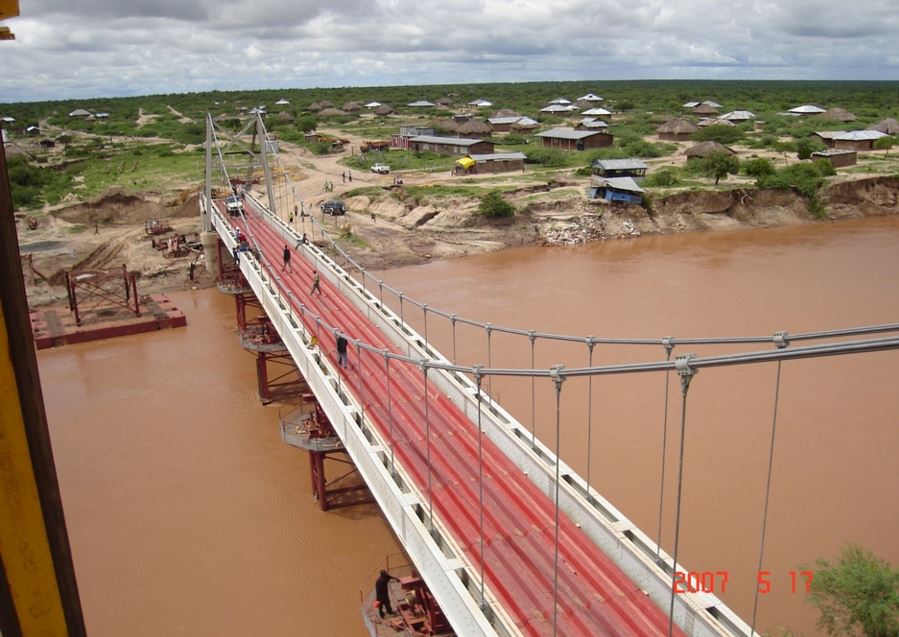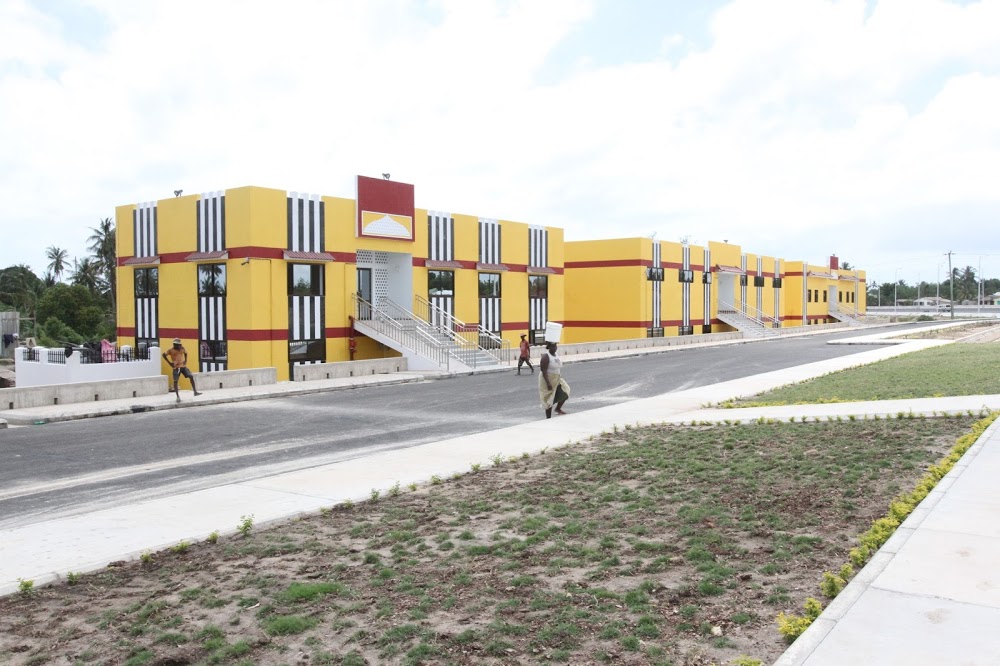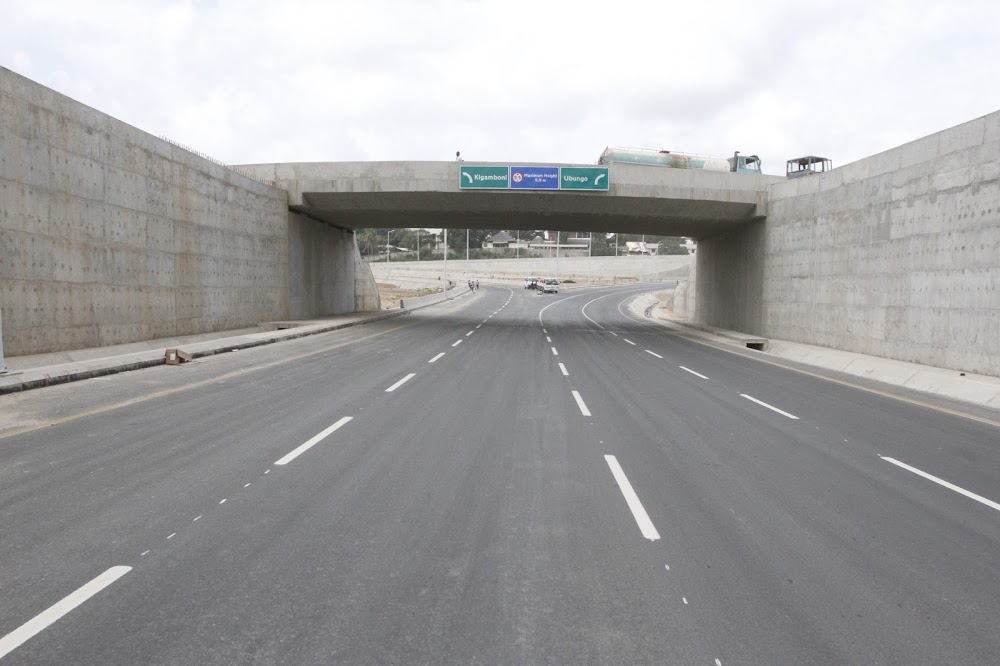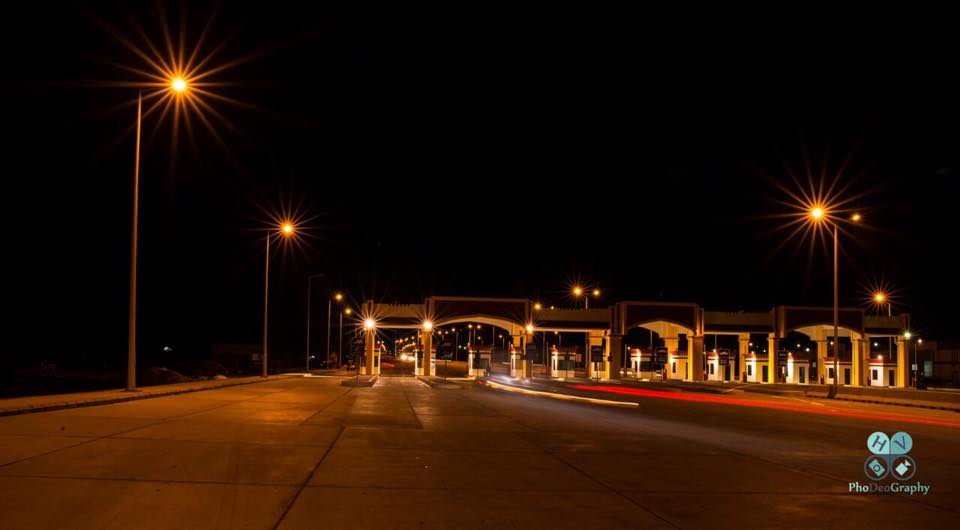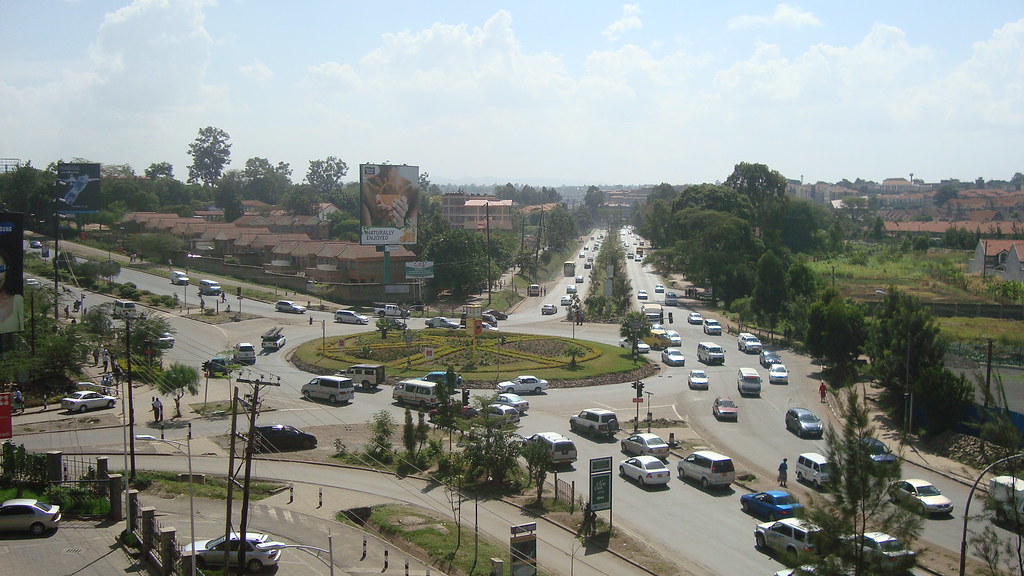According to studies, by 2025, some jobs, such as accountancy and
actuary, will be taken over by computers. Are you ready for this coming
wave?
By 2025, popular jobs such as law and accountancy might become obsolete, replaced by artificial intelligence. By then, most companies will have digitized all of their operations, according to studies. Is Kenya ready for the digital revolution?
The Bishop Magua Centre, off Ngong Road, may not hold your imagination architecturally as you creep along the notorious Nairobi traffic, but inside that building is a group of brilliant young minds imagining and creating for the future.
In this building is the iHub, the first such tech space in Kenya, which opened its doors in 2010. Here, you will find casually dressed young innovators with slim laptops talking programming while developing various applications that were unimaginable 10 years ago.
Some of these innovators now have fully fledged startups, such as Akirachix, an organisation focused on educating and inspiring a force of women in technology to solve socioeconomic problems. There is also M-Farm, a mobile app that provides farmers with information, besides connecting them to markets.
TALENTED INNOVATORS
Then there is the BRCK, a Kenyan startup that describes itself as a rugged, self-powered, mobile Wi-Fi device which connects people and things to the internet in areas with poor infrastructure. Early this year, CNN termed BRCK as a “little black box which could beat Facebook in race to connect Africa.”
It is in this environment that we meet young engineering graduates in love with design and machines at yet another innovative hub, the Gearbox.
Gearbox was started by Ushahidi, an open source project which allows users to crowdsource crisis information to be sent via mobile.
It is on a Friday afternoon, and Brenda Livoi and Pauline Kanana look like any trendy Nairobi women in their mid-twenties. There is one big difference though - they know a lot about complicated-looking machines than your ordinary 25-year-old.
The two were classmates at the University of Nairobi, where they graduated with a mechanical engineering degree last year.
Brenda works at the Gearbox as the Mechanical Lead, while Pauline is on internship. This afternoon, they take a few minutes off to discuss a technological future that several studies have shown will be disruptive to life as we know it.
Disruptive innovation is the Uber kind, which starts slowly, like a simple application, and then integrates in the market slowly to push off established traditional markets.
A study by Frost and Sullivan, a growth partnership company, shows jobs today seen as prestigious, will in only 10 years’ time be taken over by artificial intelligence and algorithms.
This includes law, telemarketing, accounting, consulting engineering and actuary - most best-performing KCSE students say they would like to study actuarial science.
Already, the world has ushered in robotic surgery; today, a young American soldier is decimating enemies’ oceans off from the comfort of a military base in America through the aid of drones.
The study, The Global Future of Work- The Future Labour Force: Impending Demographic Shifts are Shaping 2025’s Labour Outlook, analysed by Frost and Sullivan’s director of Growth Implementation Solutions, Wayne Houghton, shows that indeed, by 2025, robots will have replaced front-line military personnel.
According to another study released in October 2014, Fast Forward 2030, The Future of Work and the Workplace, shows that Artificial Intelligence will be a “tool to undertake tasks of a scale and complexity that were once unimaginable, but which are now imminently possible and hugely rewarding.”
This will create new jobs rendered by crowd-sourced freelancers and few staff, creating a 20-40 person companies, automated, or Artificial Intelligence-based companies whose speed and technological know-how will see them challenge big corporations.
Brenda and Pauline, though agreeing their profession might stand the shocks that are coming, in fact catalysing the death of other jobs, strongly differ, especially with the fact that Artificial Intelligence will replace lawyers and accountants.
“To some extent this is viable, though in Africa it might take longer than 10 years,” says Brenda. “You see, in today’s world, people want easy access to services, and technology comes in handy. I imagine indeed that there can be a computer software loaded with laws which can analyse specific cases at the touch of the button.”
This is not unimaginable, even for Kenya, a developing economy that revolutionised mobile banking through M-PESA. It is a country where a man like Simon Mwaura exists - he came to limelight in 2009 when he designed a gadget that uses a mobile phone to open and close doors and also put off lights and alarms from wherever you are.
Mwaura joined Fab Lab, the University of Nairobi’s Science and Technology Park, part of the international network which started at the Massachusetts Institute of Technology, where he streamlined his innovation. Today, he confidently pitches his home-security innovation to unbelieving clients.
There are many other Kenyan examples of the future at work, like the Ma3Route, a mobile, web and SMS platform designed by Laban Okune, which helps you navigate traffic before hitting the road.
But looking around Gearbox, with its numerous machines which make work easier, helping them develop prototypes which the executive director, Dr Kamau Gachigi says will lead to small scale production, Pauline feels that the future for individuals and countries that are slow to adopt will be a bleak one.
DIGITAL NATIVES
Indeed, as Houghton writes, the workforce of tomorrow will be digital “and significantly different from today in terms of culture, leadership style and skills.” It will also be largely millennial and post-millennial, the generation born after 1980, and which falls into what American author Marc Prensky calls Digital Natives.
Prensky describes Digital Natives as those born into a new culture, like the millennials born into the ‘Internet of Things, IoT’ era. This makes President Uhuru Kenyatta and his deputy William Ruto the opposite, Digital Immigrants, people who lived in the analogue world.
As Baby Boomers, those born after World War II, from 1946 to mid-1960s and characterised by highly optimistic individuals and cultural revolutionaries, Uhuru and Ruto can migrate to the tech world, as they indeed tout themselves as a digital government, even if it means hiring early adopters and millennials like Dennis Itumbi.
But the future being built around the Internet of Things, where digital and mechanical devices are increasingly connected and send data without human-to-human interactions would call for more interventions and investments.
David Kimani is a teacher who quit teaching after realising the rigid Kenyan education system fails to inspire imagination and creativity. He founded the Juhudi Children’s Club, which provides alternative learning, mostly outdoor and hands-on. Kimani is also fascinated by how science evolves, and also by the digital revolution. He has been collecting digital gadgets and electronics that are now defunct.
His rich collection boasts of telephones, cameras, television sets and even weather equipment no longer in use. He plans to open a science park and museum as an education platform where school children will learn about digital and scientific evolution.
“We need to inspire our children to be innovative. Like in the history lessons, learning the technological and innovative past, children will be inspired to imagine and build the future.”
Curriculum needs urgent overhaul
Indeed, Dr Gachigi, concurs, but thinks in terms of his field, higher education. The former director at the University of Nairobi’s Fab Lab envisions a “national innovation centre,” which will empower Kenya’s makers and engineers.
As it is today, the education system is too rigid.
“Universities take time to review curriculums, which are rigid, and too structured. The more we structure it, the more we lose it, we need to keep adapting to avoid what in tech terms is known as grand-mothering, which in essence means putting yourself to extinction. We need to be dynamic.”
Incredibly, a recent Deutsche Welle ‘Made in Germany’ show had a young techie complain that the country has also not reviewed its curriculum, like say, America has. This, he argued, will see the country lag behind.
Incredible because Kenyans view German ‘machines’ and technology as the holy grail of innovation - if Germany needs to review their education system, Kenya needs to overhaul it.
Dr Gachigi says that even though Kenya is seen as being vibrant on social media, many people do not have access to the internet, and so they will be left out in a world that is increasingly AORTA (Always on Real-Time Access, as the techies say), connected.
Thus, as the world becomes globalised, with Internet of Things defining the way people live (already companies like Microsoft have extended IoT to jet engines and refrigerators, meaning you can control the temperature of your yoghurt from wherever) and work, traditional jobs will die, but this need not alarm you.
Dr Gachigi thinks that even though people will be rendered jobless with the coming digital revolution, in the long run, it will be a blessing.
“As machines and artificial intelligence replace people, so does the economy grow, making more people affluent,” he says, “the losers will in time innovate so as to capitalise on the new wealth.”
To the government and the people designing Kenya’s new curriculum, it will do to note that traditional prestigious courses such as law, medicine and architecture might not hold in the future.
Already, you can get a diagnosis from an automated doctor. WebMD is an online platform that gives health and medical information and is respected by doctors and users worldwide.
It has a symptom checker which a patient with an internet connection need only key in his symptoms to get a diagnosis. Hospitals such as the Aga Khan University Hospital already have telemedicine, where a medic in Kisumu can get real-time feedback from his peers in Nairobi.
Also, points out Dr Gachigi, in architecture, one can find many designs online, which you can purchase at the fraction of the price a local architect will charge. Why would you then need an architect? And as the Fast Forward 2030 report shows, by then, majority of real estate transactions will be online, operating like Uber.
Already, digital companies like Airbnb is revolutionising the way people travel and get accommodation. Here, homeowners from the major cities of the world, including Nairobi, sign up online, giving an overview of their spaces, contact details and directions. The digital homestay experience is already disrupting traditional hotels, which are crying foul.
By 2030, adds the report, the millennials will demand conducive, green spaces, and landlords will go beyond just providing lease tenancies.
Luckily, in 2025, as mentioned earlier, business leaders will be digital natives who are able to adopt new technologies faster, but education must be aligned to take advantage of the new careers and opportunities that Artificial Intelligence and automation will create. These are mostly remote jobs, done by freelancers or digital nomads.
They include cyber security experts, engineering psychologists, neuro-implant technicians, virtual health care specialists and virtual reality experience designers.
It is indeed an exciting future we are galloping into, where the early adopters will smile all the way to the bank, nay, to their mobile bank apps.
By 2025, popular jobs such as law and accountancy might become obsolete, replaced by artificial intelligence. By then, most companies will have digitized all of their operations, according to studies. Is Kenya ready for the digital revolution?
The Bishop Magua Centre, off Ngong Road, may not hold your imagination architecturally as you creep along the notorious Nairobi traffic, but inside that building is a group of brilliant young minds imagining and creating for the future.
In this building is the iHub, the first such tech space in Kenya, which opened its doors in 2010. Here, you will find casually dressed young innovators with slim laptops talking programming while developing various applications that were unimaginable 10 years ago.
Some of these innovators now have fully fledged startups, such as Akirachix, an organisation focused on educating and inspiring a force of women in technology to solve socioeconomic problems. There is also M-Farm, a mobile app that provides farmers with information, besides connecting them to markets.
TALENTED INNOVATORS
Then there is the BRCK, a Kenyan startup that describes itself as a rugged, self-powered, mobile Wi-Fi device which connects people and things to the internet in areas with poor infrastructure. Early this year, CNN termed BRCK as a “little black box which could beat Facebook in race to connect Africa.”
It is in this environment that we meet young engineering graduates in love with design and machines at yet another innovative hub, the Gearbox.
Gearbox was started by Ushahidi, an open source project which allows users to crowdsource crisis information to be sent via mobile.
It is on a Friday afternoon, and Brenda Livoi and Pauline Kanana look like any trendy Nairobi women in their mid-twenties. There is one big difference though - they know a lot about complicated-looking machines than your ordinary 25-year-old.
The two were classmates at the University of Nairobi, where they graduated with a mechanical engineering degree last year.
Brenda works at the Gearbox as the Mechanical Lead, while Pauline is on internship. This afternoon, they take a few minutes off to discuss a technological future that several studies have shown will be disruptive to life as we know it.
Disruptive innovation is the Uber kind, which starts slowly, like a simple application, and then integrates in the market slowly to push off established traditional markets.
A study by Frost and Sullivan, a growth partnership company, shows jobs today seen as prestigious, will in only 10 years’ time be taken over by artificial intelligence and algorithms.
This includes law, telemarketing, accounting, consulting engineering and actuary - most best-performing KCSE students say they would like to study actuarial science.
Already, the world has ushered in robotic surgery; today, a young American soldier is decimating enemies’ oceans off from the comfort of a military base in America through the aid of drones.
The study, The Global Future of Work- The Future Labour Force: Impending Demographic Shifts are Shaping 2025’s Labour Outlook, analysed by Frost and Sullivan’s director of Growth Implementation Solutions, Wayne Houghton, shows that indeed, by 2025, robots will have replaced front-line military personnel.
According to another study released in October 2014, Fast Forward 2030, The Future of Work and the Workplace, shows that Artificial Intelligence will be a “tool to undertake tasks of a scale and complexity that were once unimaginable, but which are now imminently possible and hugely rewarding.”
This will create new jobs rendered by crowd-sourced freelancers and few staff, creating a 20-40 person companies, automated, or Artificial Intelligence-based companies whose speed and technological know-how will see them challenge big corporations.
Brenda and Pauline, though agreeing their profession might stand the shocks that are coming, in fact catalysing the death of other jobs, strongly differ, especially with the fact that Artificial Intelligence will replace lawyers and accountants.
“To some extent this is viable, though in Africa it might take longer than 10 years,” says Brenda. “You see, in today’s world, people want easy access to services, and technology comes in handy. I imagine indeed that there can be a computer software loaded with laws which can analyse specific cases at the touch of the button.”
This is not unimaginable, even for Kenya, a developing economy that revolutionised mobile banking through M-PESA. It is a country where a man like Simon Mwaura exists - he came to limelight in 2009 when he designed a gadget that uses a mobile phone to open and close doors and also put off lights and alarms from wherever you are.
Mwaura joined Fab Lab, the University of Nairobi’s Science and Technology Park, part of the international network which started at the Massachusetts Institute of Technology, where he streamlined his innovation. Today, he confidently pitches his home-security innovation to unbelieving clients.
There are many other Kenyan examples of the future at work, like the Ma3Route, a mobile, web and SMS platform designed by Laban Okune, which helps you navigate traffic before hitting the road.
But looking around Gearbox, with its numerous machines which make work easier, helping them develop prototypes which the executive director, Dr Kamau Gachigi says will lead to small scale production, Pauline feels that the future for individuals and countries that are slow to adopt will be a bleak one.
DIGITAL NATIVES
Indeed, as Houghton writes, the workforce of tomorrow will be digital “and significantly different from today in terms of culture, leadership style and skills.” It will also be largely millennial and post-millennial, the generation born after 1980, and which falls into what American author Marc Prensky calls Digital Natives.
Prensky describes Digital Natives as those born into a new culture, like the millennials born into the ‘Internet of Things, IoT’ era. This makes President Uhuru Kenyatta and his deputy William Ruto the opposite, Digital Immigrants, people who lived in the analogue world.
As Baby Boomers, those born after World War II, from 1946 to mid-1960s and characterised by highly optimistic individuals and cultural revolutionaries, Uhuru and Ruto can migrate to the tech world, as they indeed tout themselves as a digital government, even if it means hiring early adopters and millennials like Dennis Itumbi.
But the future being built around the Internet of Things, where digital and mechanical devices are increasingly connected and send data without human-to-human interactions would call for more interventions and investments.
David Kimani is a teacher who quit teaching after realising the rigid Kenyan education system fails to inspire imagination and creativity. He founded the Juhudi Children’s Club, which provides alternative learning, mostly outdoor and hands-on. Kimani is also fascinated by how science evolves, and also by the digital revolution. He has been collecting digital gadgets and electronics that are now defunct.
His rich collection boasts of telephones, cameras, television sets and even weather equipment no longer in use. He plans to open a science park and museum as an education platform where school children will learn about digital and scientific evolution.
“We need to inspire our children to be innovative. Like in the history lessons, learning the technological and innovative past, children will be inspired to imagine and build the future.”
Curriculum needs urgent overhaul
Indeed, Dr Gachigi, concurs, but thinks in terms of his field, higher education. The former director at the University of Nairobi’s Fab Lab envisions a “national innovation centre,” which will empower Kenya’s makers and engineers.
As it is today, the education system is too rigid.
“Universities take time to review curriculums, which are rigid, and too structured. The more we structure it, the more we lose it, we need to keep adapting to avoid what in tech terms is known as grand-mothering, which in essence means putting yourself to extinction. We need to be dynamic.”
Incredibly, a recent Deutsche Welle ‘Made in Germany’ show had a young techie complain that the country has also not reviewed its curriculum, like say, America has. This, he argued, will see the country lag behind.
Incredible because Kenyans view German ‘machines’ and technology as the holy grail of innovation - if Germany needs to review their education system, Kenya needs to overhaul it.
Dr Gachigi says that even though Kenya is seen as being vibrant on social media, many people do not have access to the internet, and so they will be left out in a world that is increasingly AORTA (Always on Real-Time Access, as the techies say), connected.
Thus, as the world becomes globalised, with Internet of Things defining the way people live (already companies like Microsoft have extended IoT to jet engines and refrigerators, meaning you can control the temperature of your yoghurt from wherever) and work, traditional jobs will die, but this need not alarm you.
Dr Gachigi thinks that even though people will be rendered jobless with the coming digital revolution, in the long run, it will be a blessing.
“As machines and artificial intelligence replace people, so does the economy grow, making more people affluent,” he says, “the losers will in time innovate so as to capitalise on the new wealth.”
To the government and the people designing Kenya’s new curriculum, it will do to note that traditional prestigious courses such as law, medicine and architecture might not hold in the future.
Already, you can get a diagnosis from an automated doctor. WebMD is an online platform that gives health and medical information and is respected by doctors and users worldwide.
It has a symptom checker which a patient with an internet connection need only key in his symptoms to get a diagnosis. Hospitals such as the Aga Khan University Hospital already have telemedicine, where a medic in Kisumu can get real-time feedback from his peers in Nairobi.
Also, points out Dr Gachigi, in architecture, one can find many designs online, which you can purchase at the fraction of the price a local architect will charge. Why would you then need an architect? And as the Fast Forward 2030 report shows, by then, majority of real estate transactions will be online, operating like Uber.
Already, digital companies like Airbnb is revolutionising the way people travel and get accommodation. Here, homeowners from the major cities of the world, including Nairobi, sign up online, giving an overview of their spaces, contact details and directions. The digital homestay experience is already disrupting traditional hotels, which are crying foul.
By 2030, adds the report, the millennials will demand conducive, green spaces, and landlords will go beyond just providing lease tenancies.
Luckily, in 2025, as mentioned earlier, business leaders will be digital natives who are able to adopt new technologies faster, but education must be aligned to take advantage of the new careers and opportunities that Artificial Intelligence and automation will create. These are mostly remote jobs, done by freelancers or digital nomads.
They include cyber security experts, engineering psychologists, neuro-implant technicians, virtual health care specialists and virtual reality experience designers.
It is indeed an exciting future we are galloping into, where the early adopters will smile all the way to the bank, nay, to their mobile bank apps.
















